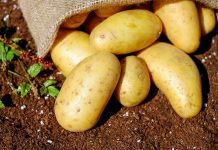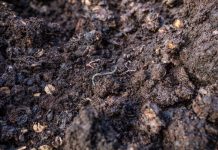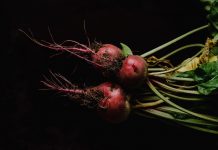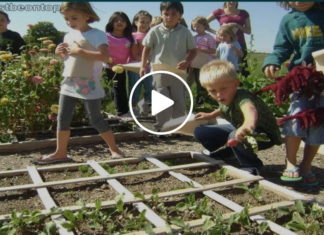Introduction
Food shortages can happen for a variety of reasons, including natural disasters, economic instability, and even unexpected events like pandemics. Being prepared for a food shortage is critical, especially if it lasts for an extended period, such as three months. In this article, we will discuss how to prepare for a food shortage of three months and maintain a balanced diet during this time.
Definition of food shortage
A food shortage refers to a situation in which the demand for food exceeds its supply, leading to a scarcity of food and increasing prices. Food shortages can occur due to a variety of reasons, including natural disasters, war, and economic instability.
Importance of being prepared
Being prepared for a food shortage is important because it helps ensure that you have access to the food and supplies you need to sustain yourself and your family. A food shortage can also have a significant impact on your mental and emotional well-being, so it’s important to have a plan in place to help reduce stress and uncertainty.
Understanding the scope of the shortage
A. Duration of the shortage (3 months)
A food shortage that lasts for three months is a significant amount of time, and it requires careful planning and preparation. It’s important to understand the scope of the shortage so that you can make informed decisions about what to store and how to prepare for it.
Impact on food supply and availability
During a food shortage, the availability and price of food can be impacted. It’s important to consider how this may affect you and your family, and to prepare accordingly by stocking up on non-perishable food items and learning how to preserve food.
Stocking up on non-perishable food items
List of items to have on hand
- Grains and cereals
Grains and cereals are a staple in many diets, and they are also a great source of energy. During a food shortage, it’s important to have a supply of grains and cereals on hand, such as rice, pasta, and oatmeal.
- Canned goods and dried beans
Canned goods and dried beans are non-perishable and can provide a good source of protein and other nutrients. Canned goods, such as vegetables, fruits, and soups, are convenient and can be used in a variety of recipes. Dried beans, such as black beans and lentils, can also provide a good source of protein and can be used in a variety of dishes.
- Nuts and seeds
Nuts and seeds are a good source of healthy fats and protein, and they can be used as a snack or added to other dishes. Some popular options include almonds, walnuts, and pumpkin seeds.
- Baking supplies
Baking supplies, such as flour, sugar, and baking powder, can be used to make a variety of baked goods, such as bread, muffins, and cookies.
- Meat alternatives
If you don’t eat meat, or you are looking for a meat alternative during a food shortage, consider stocking up on tofu, tempeh, and other meat alternatives like plant protein powder. These products are high in protein and can be used in a variety of dishes.
Importance of rotating and using stored food items
It’s important to rotate and use stored food items regularly to prevent waste and ensure that your food supplies remain fresh. Consider using a first-in, first-out (FIFO) system, where you use the oldest food items first and replace them with newer items. This can help to reduce waste and ensure that your food supplies remain fresh.
Building a Food Garden: Preparing for a 3-Month Shortage
Food security is a concern for many households, especially in times of crisis. One way to ensure that you have access to fresh produce even during a shortage is by building a food garden. In this article, we will go over some tips and tricks for creating a successful food garden, including choosing appropriate crops, maintaining a balanced diet, and preserving your harvest.
Choosing Appropriate Crops for a 3-Month Shortage
When choosing crops for your food garden, it’s essential to consider the length of time it takes for them to mature and the number of harvests you can get from each plant. Here are some crops that are ideal for a 3-month shortage:
- Quick-growing crops: Some crops, like radishes, lettuce, and spinach, grow quickly and can be harvested within a few weeks. This makes them an excellent option for a short-term food supply.
- Plants with multiple harvests: Other crops, like kale and Swiss chard, can be harvested several times before they reach maturity. This means you can continue to harvest fresh produce from the same plant over an extended period.
Now that you have an idea of which crops to choose, let’s go over some tips for successful gardening:
Soil preparation: The quality of your soil is crucial to the success of your food garden. Make sure to prepare the soil by adding compost and removing any weeds or debris.
Watering and maintenance: Consistent watering is essential for your crops to grow, but it’s essential not to over-water them. Check the soil regularly and adjust your watering schedule accordingly.
Making Use of Preservation Techniques
Once you have harvested your crops, it’s essential to preserve them for later use. Here are some preservation techniques that you can use:
Canning and preserving fruits and vegetables: Canning is a great way to preserve the taste and nutrients of your fresh produce. There are several methods of canning, including water-bath canning and pressure canning.
Dehydrating meat and produce: Dehydrating is another way to preserve your food for later use. Dehydrated food can be stored for a longer period and can be reconstituted by adding water.
Freezing and refrigerating: Freezing and refrigerating are also options for preserving your food. Make sure to properly wrap your food before storing it in the freezer or refrigerator.
Maintaining a Balanced Diet
Having access to fresh produce is only half the battle. It’s also essential to maintain a balanced diet by including essential nutrients. Here are some considerations for maintaining a balanced diet:
Importance of including essential nutrients: A balanced diet should include a variety of fruits and vegetables, whole grains, lean protein, and healthy fats.
Considerations for special diets: If you have specific dietary needs, like gluten-free or vegan, make sure to choose crops that align with your dietary restrictions.
In conclusion, building a food garden can provide you with a fresh supply of produce during a shortage. By choosing appropriate crops, following tips for successful gardening, making use of preservation techniques, and maintaining a balanced diet, you can ensure that your food garden is both productive and nutritious.














